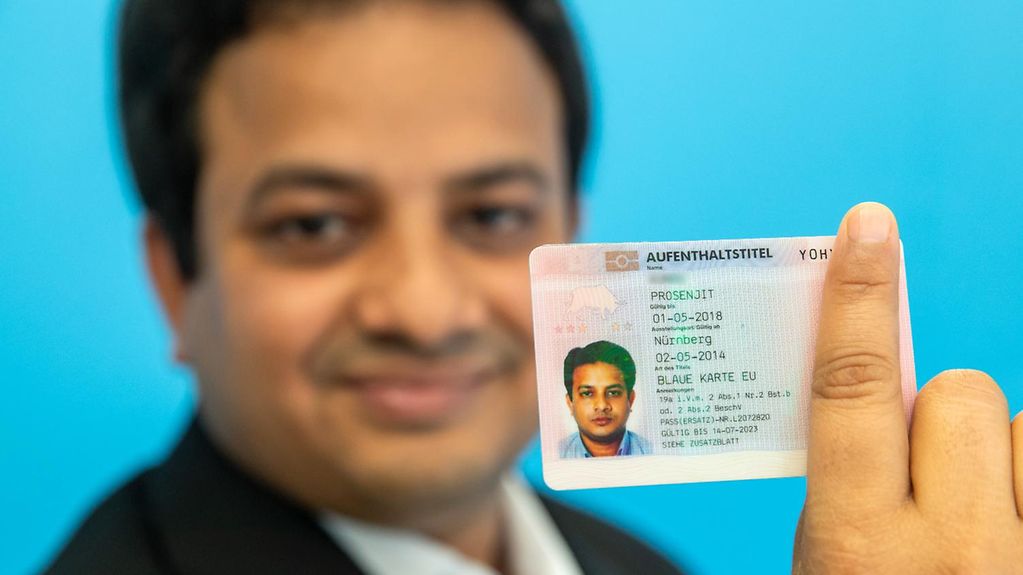Der Link wurde in Ihrer Zwischenablage gespeichert
The German government has adopted the Migration Report 2016/2017. The number of migrants coming to Germany has dropped, and two thirds of all immigrants came from European states. While the number of people coming to Germany to work rose, there was a significant decline in the number of people claiming asylum.
2 Min. Lesedauer

The Blue Card is an important way of attracting skilled workers. It allows highly qualified individuals to come to Germany to work.
Foto: Daniel Karmann/picture alliance/dpa
In 2016 and 2017 inward migration to Germany dropped significantly – that is one of the main findings of the Migration Report, that the Cabinet adopted today. The main factor in the decline is the dramatic drop in the number of refugees. Whereas in 2015 almost 900,000 people sought protection in Germany, this figure had dropped below 190,000 in 2017.
For many years now most of the people migrating to Germany have come from other European states. Last year, 67 per cent of all immigrants came from a European country, 53.4 per cent of them from other EU member states. The same is true of outward migration: 64.8 per cent of the people leaving Germany to live in another country, chose a European state. 51.8 per cent of them moved to another EU member state.
More and more people are coming from third states to work in Germany. Inward migration to take up employment rose from around 26,000 in 2009 to 61,000 in 2017.
The numbers of skilled workers and highly qualified individuals coming to Germany from third states has also risen in recent years. While in 2009, some 16,000 skilled workers and highly qualified individuals came to Germany, the figure rose to around 38,000 in 2017, representing an increase of about 136 per cent. In this context the EU Blue Card, a residence permit for highly qualified individuals from outside the EU, has become increasingly important. In terms of overall work-related migration, almost one person in five now holds a Blue Card. The system has thus become established in Germany as an important way of attracting skilled workers.
The number of people seeking asylum has dropped significantly. In 2017, 72.5 per cent fewer first-time requests for asylum were received than in the previous year.
A whole series of measures have been taken to address the challenges posed by influxes of refugees: asylum procedures have been further optimised, migration flows of asylum seekers have been steered, and unwanted or misleading incentives eliminated, both at national level and in cooperation with the EU and third states. The burdens on federal states and local authorities have been eased, integration measures extended, and steps taken to address the factors that cause people to flee their homes in the first place.
The Migration Report lays out comprehensive statistical data relating to all aspects of migration in Germany. It provides information on trends in inward and outward migration, the different types of migration and the structure of the population with a migrant background. The report is drawn up by the Federal Office for Migration and Refugees. Once it has been approved by the Cabinet it is presented to the two chambers of the German parliament, the Bundestag and the Bundesrat.